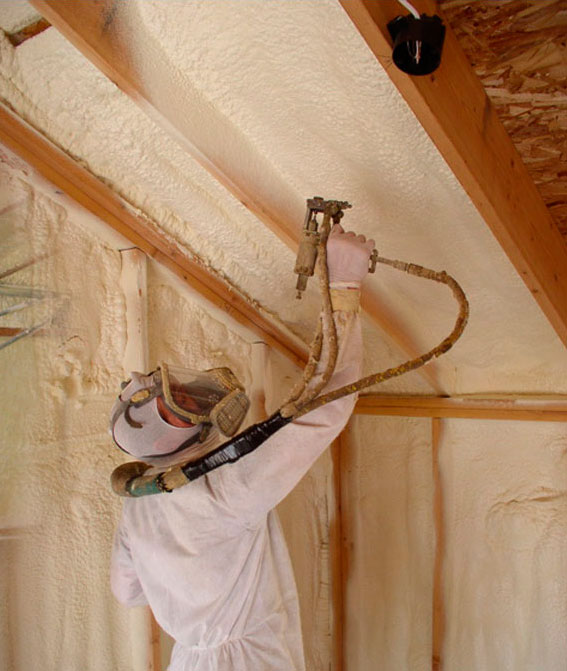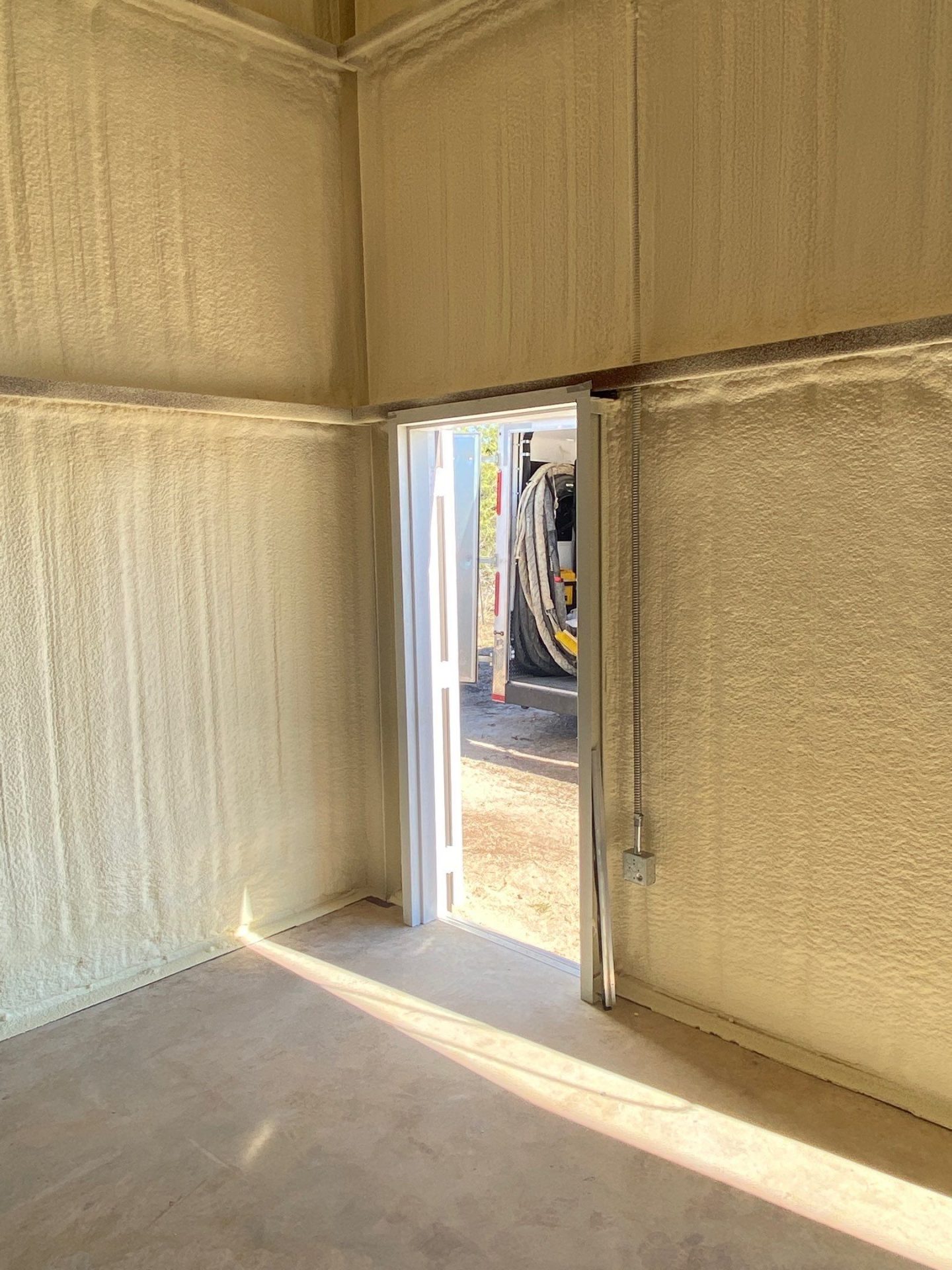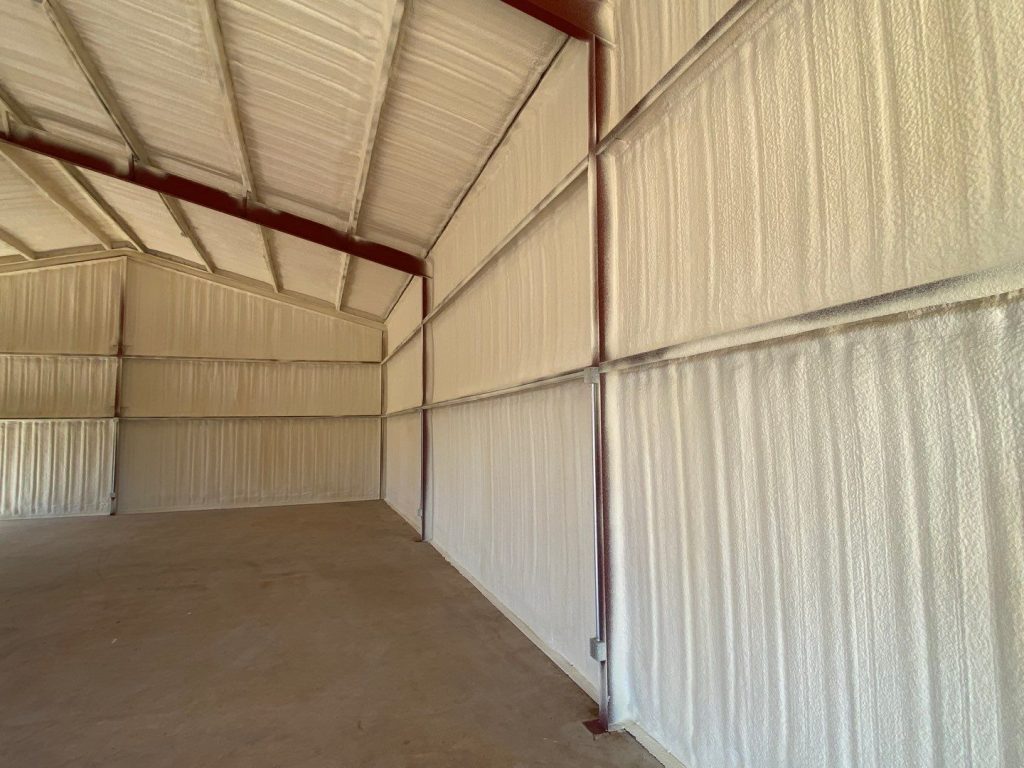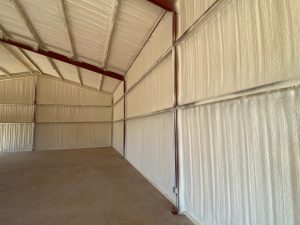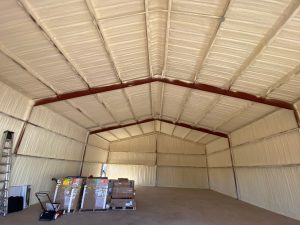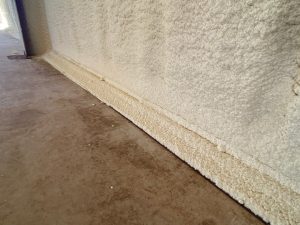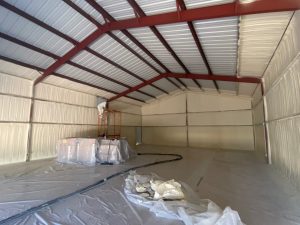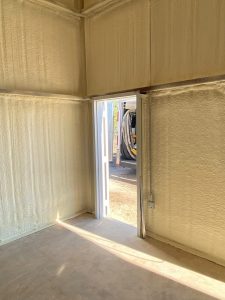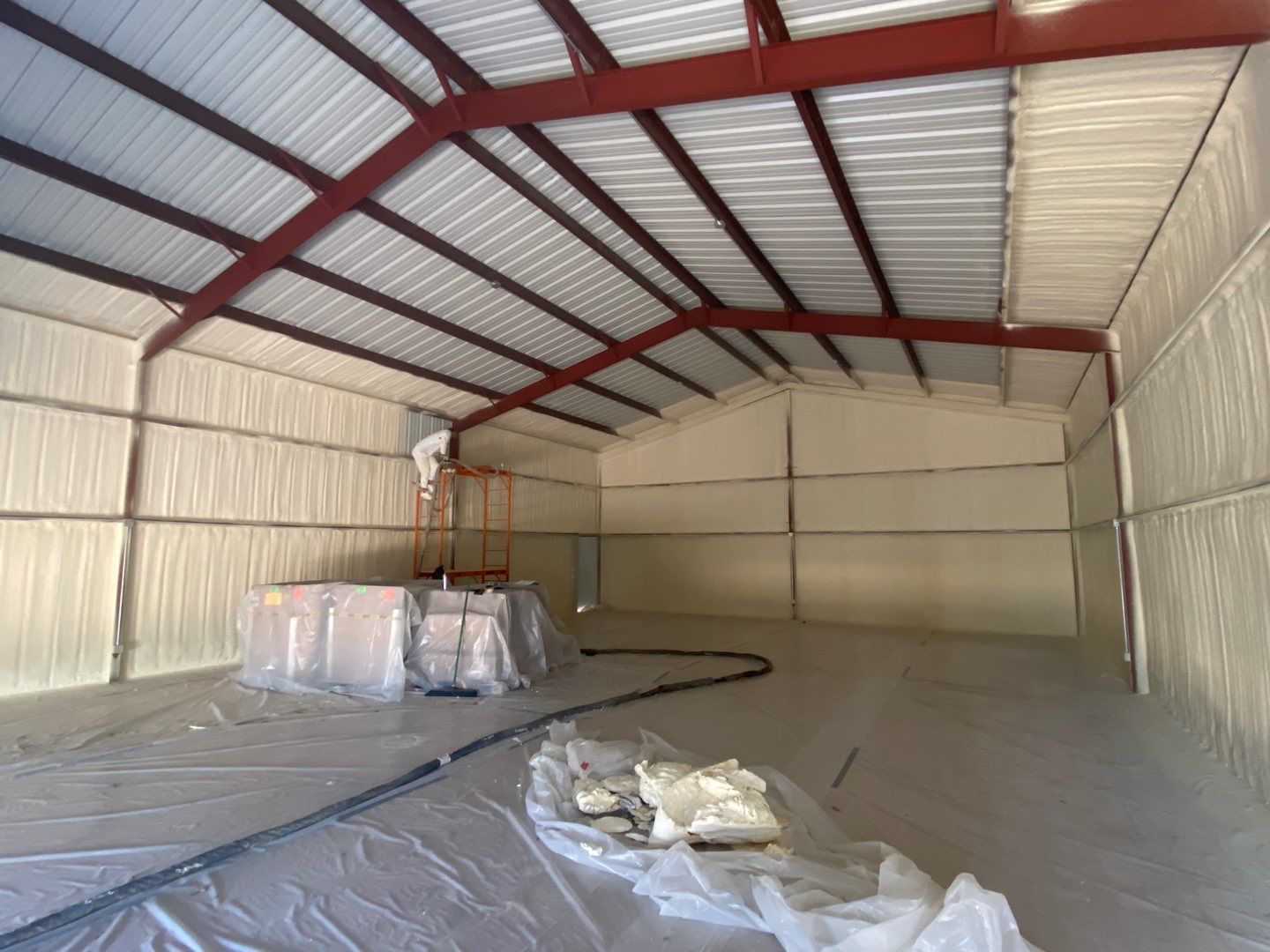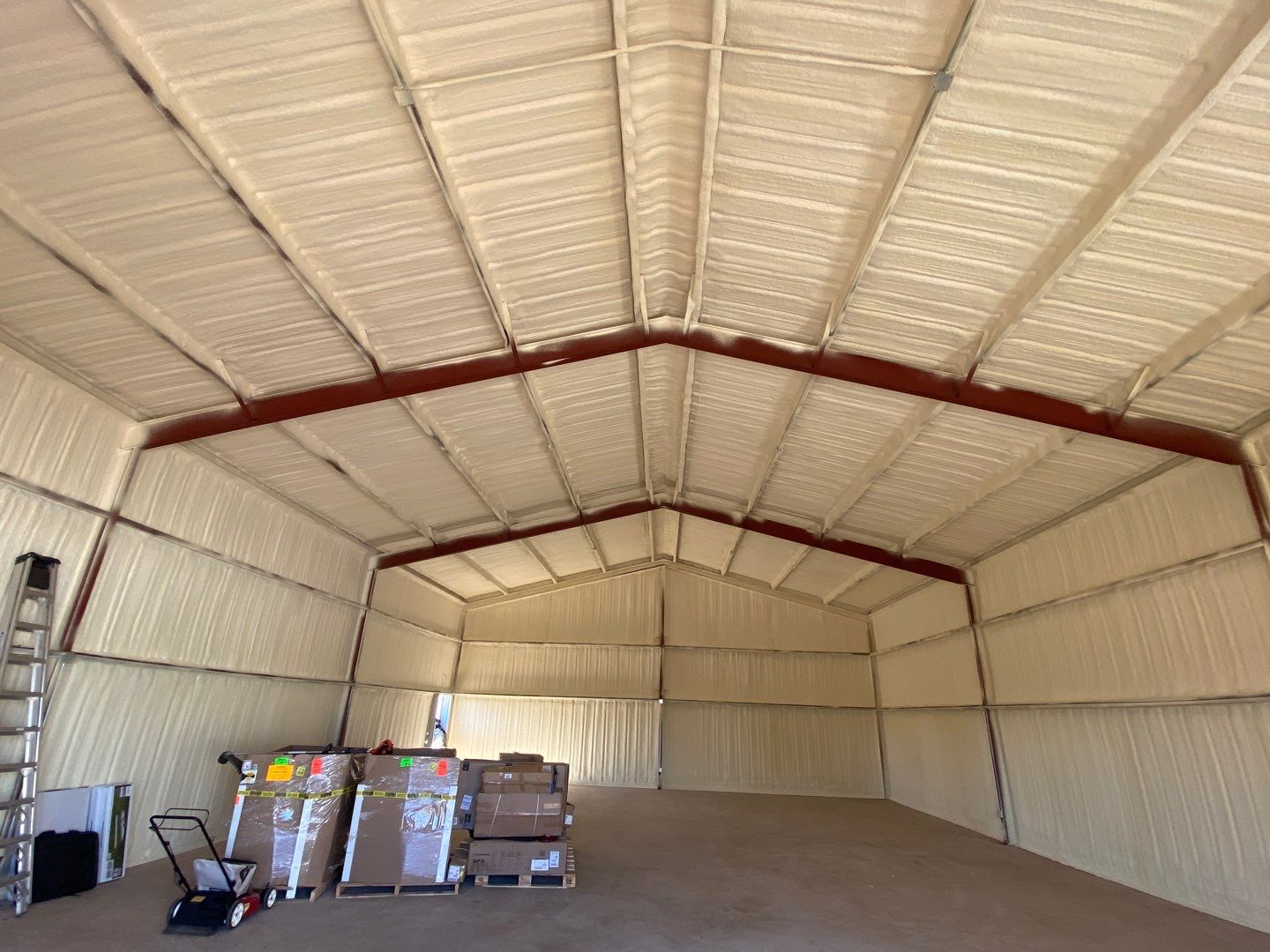How Spray Foam Insulation Works
Spray foam insulation is a unique solution for insulating homes and buildings. It’s composed of two liquid chemical components that, when combined, expand to form a solid foam. This expansion allows it to fill gaps and crevices, creating an effective thermal barrier.
Unlike traditional insulation materials, spray foam adheres to surfaces, forming a seamless layer and significantly reducing air infiltration. This characteristic is key to its effectiveness, as it insulates and seals air leaks, a major contributor to building energy loss.
Benefits of Spray Foam Insulation
Spray foam insulation offers numerous benefits over traditional insulation materials like fiberglass or cellulose. Its superior air-sealing properties significantly reduce energy bills by preventing heat transfer and air leaks.
- This results in a more consistent indoor temperature, enhancing overall comfort.
- It improves indoor air quality by reducing the influx of outside allergens and pollutants.
- Spray foam’s moisture-resistant properties prevent the growth of mold and mildew, which is crucial in humid climates like San Antonio. A
- Its longevity and durability mean it doesn’t settle or degrade over time, making it a cost-effective long-term investment.
Types of Spray Foam Insulation
There are two main types of spray foam insulation: open-cell and closed-cell.
- Open-cell foam is lighter and more flexible, with a lower R-value per inch, making it ideal for interior applications. Its open structure allows for effective sound dampening, making it a popular choice for noise reduction.
- Closed-cell foam is denser and more rigid, with a higher R-value, providing greater thermal resistance. It is also moisture-resistant, making it suitable for areas prone to water exposure.
Choosing between open-cell and closed-cell foam for San Antonio homes will depend on specific needs like climate control, moisture resistance, and budget considerations.
Open-Cell Spray Foam
This type of foam is soft or weak because the cells are not entirely closed; it’s as if it were made of broken balloons or soft rubber balls. This type of foam is less expensive because it uses fewer chemicals. Though it does not provide any kind of water vapor barrier, it is an excellent air barrier.
It has a sponge-like appearance and is often used for interior walls because it reduces sound by damping the movement of existing insulation. Open-cell foam insulation is not recommended for outdoor applications. Open-cell foam insulation is typically applied for residential construction insulation, sound deadening in media rooms, under roof trusses, etc.
Closed-Cell Spray Foam
Closed-cell foam insulation is a much denser type of foam than open-cell. Its cell structure is smaller and more compact. It is a sound barrier for both air and water vapor. It is also often used in roofing projects or other outdoor applications but can be used anywhere in the home.
Closed-cell expands a little more slowly than open-cell, which expands and cures quickly, causing the tiny cells to grow so fast, resulting in a soft, slightly spongy insulation that is more moisture-permeable than a closed-cell. Though it is a superior insulating product commonly used in residential constructions, closed-cell foam is also used in various commercial and industrial applications because of its excellent strength, insulating properties, and good vapor barrier qualities.
Enhancing Energy Efficiency with Spray Foam Insulation
Effective insulation is pivotal in reducing energy consumption in homes and buildings. By creating a barrier against heat transfer, insulation helps maintain desired indoor temperatures with less reliance on heating and cooling systems.
In San Antonio’s varied climate, where temperatures can soar in summer and drop in winter, spray foam insulation plays a crucial role. It fills gaps and cracks that traditional insulation might miss, preventing air leaks that can account for significant energy loss. This tight seal means HVAC systems work less to maintain comfort, leading to reduced energy use and lower utility bills. The energy savings realized from this efficient temperature regulation contribute to a more sustainable, cost-effective home environment.
Improving Comfort and Indoor Air Quality
Spray foam insulation’s ability to create an airtight seal directly impacts indoor comfort and air quality.
- Eliminating drafts and cold spots ensures a more uniform temperature distribution throughout the building. This consistent indoor climate enhances comfort and contributes to a healthier living environment.
- Reduced air infiltration means fewer outdoor allergens and pollutants enter the home, which is especially beneficial for individuals with respiratory issues or allergies.
- Spray foam’s moisture-resistant properties prevent dampness and mold growth, common issues in San Antonio’s humid climate.
These factors collectively improve the overall indoor air quality, making homes safer and more comfortable.
Cost Savings with Spray Foam Insulation
Investing in spray foam insulation offers significant long-term cost savings. While the initial installation cost may be higher than traditional insulation, the energy savings accrued over time make it a financially sound choice.
Homeowners in San Antonio can expect reduced utility bills due to the decreased demand for heating and cooling systems. This reduction can be substantial, especially during extreme weather periods. The durability of spray foam means it doesn’t need to be replaced like other insulation types, further adding to its cost-effectiveness.
Over the years, these savings can offset the initial investment, making spray foam an economically advantageous option for energy-conscious homeowners.
Case Studies Examples
These theoretical case studies illustrate the efficiency of spray foam insulation.
Case Study 1: Historic Home Retrofit
- Background: A 1920s single-family home, previously uninsulated.
- Solution: Installation of open-cell spray foam insulation in walls and attic.
- Results: Post-installation, the homeowner reported a 30% reduction in energy bills. The house maintained a consistent temperature, enhancing comfort during San Antonio’s hot summers and chilly winters. The insulation also contributed to preserving the home’s structural integrity by preventing moisture-related issues.
Case Study 2: New Suburban Development
- Background: A new construction project consisting of multiple single-family homes.
- Solution: Each home was insulated with closed-cell spray foam in the walls, roof, and foundation.
- Results: Compared to similar homes in the area with traditional insulation, these homes showed a 40% decrease in energy usage. The tight seal provided by the spray foam significantly reduced the need for heating and cooling, leading to lower utility bills and improved indoor air quality.
Case Study 3: Commercial Building Upgrade
- Background: A mid-sized office building experiencing high energy costs and uneven temperature distribution.
- Solution: Retrofitting with closed-cell spray foam insulation in exterior walls and roof.
- Results: The business observed a 35% reduction in energy costs annually. Employees reported a noticeable improvement in comfort due to consistent temperatures and reduced drafts. The upgrade also contributed to the building’s overall sustainability goals.
Case Study 4: School Building Renovation
- Background: An older school building with poor insulation leads to high HVAC costs.
- Solution: Complete insulation overhaul using a combination of open-cell and closed-cell spray foam.
- Results: Post-renovation, the school saw a 25% decrease in energy consumption. The enhanced insulation improved the learning environment through better temperature control and noise reduction. Additionally, the school’s reduced carbon footprint aligned with district-wide green initiatives.
These hypothetical case studies offer a realistic view of the potential energy efficiency improvements achievable with spray foam insulation in various settings in San Antonio. The percentage improvements are based on typical results reported in similar real-life scenarios.
Tips for Maximizing Energy Efficiency
Maximizing energy efficiency with spray foam insulation involves several strategies.
Ensuring complete coverage is crucial; even small gaps can diminish insulation effectiveness. Homeowners should also consider additional energy-saving measures like energy-efficient windows, proper attic ventilation, and using LED lighting. Regular HVAC system maintenance and programmable thermostats can further enhance energy efficiency.
Combining these approaches with spray foam insulation can yield substantial energy savings and a more environmentally friendly home.
Choosing the Right Spray Foam Insulation for San Antonio
San Antonio experiences a humid subtropical climate characterized by hot summers and mild winters. This climate poses unique challenges for insulation. In summer, the primary goal is to keep the cool air inside, while in winter, it’s about retaining warmth. Spray foam insulation is particularly effective in this regard due to its superior air-sealing properties. Selecting the right spray foam type is crucial for San Antonio homes.
- With its lower R-value and moisture permeability, open-cell foam is suitable for interior applications, providing excellent air sealing and sound reduction.
- With its higher R-value and moisture resistance, closed-cell foam is ideal for external walls and moisture-prone areas. Its ability to resist water absorption is particularly beneficial in San Antonio’s humid environment, preventing mold growth and structural damage.
R-Value and Thermal Performance
The R-value of insulation material indicates its thermal resistance, which is critical in determining energy efficiency. In San Antonio, where temperatures can fluctuate significantly, a high R-value insulation is beneficial for maintaining indoor comfort and reducing energy costs. Closed-cell spray foam typically offers a higher R-value per inch than open-cell foam, making it more efficient in preventing heat transfer. For exterior walls and unvented attics, closed-cell foam can provide the necessary thermal barrier to keep homes cool in summer and warm in winter. However, open-cell foam with a lower R-value may be sufficient for interior walls or areas where moisture is less concerned, offering a balance between insulation and cost.
Moisture and Mold Resistance
Moisture control is a vital aspect of insulation, especially in humid climates like San Antonio. Prolonged exposure to moisture can lead to mold growth and structural damage. Closed-cell spray foam insulation is impermeable to water, making it an excellent choice for areas susceptible to moisture, such as basements, bathrooms, and exterior walls.
Its dense structure prevents water vapor from penetrating, thus protecting the building structure from moisture-related issues. Conversely, while not as moisture-resistant, open-cell foam allows for more breathability in the building envelope. This can be advantageous in properly ventilated areas, helping to regulate indoor humidity levels and prevent condensation.
Noise Reduction with Spray Foam Insulation
Noise reduction is an often-overlooked benefit of spray foam insulation. In urban areas of San Antonio, reducing external noise can significantly improve living comfort. Open-cell spray foam is particularly effective in this regard due to its soft, flexible texture, which absorbs sound vibrations. Installing it in internal walls, floors, and ceilings can dampen noise transfer between rooms and from external sources, such as traffic or neighborhood activity. Closed-cell foam, while less effective as a sound barrier due to its density, can still contribute to overall noise reduction when used in external walls. This dual benefit of noise reduction and thermal insulation makes spray foam an attractive option for residential and commercial San Antonio properties.
Hiring a Spray Foam Insulation Contractor
Importance of Professional Installation
Professional installation is crucial for maximizing the benefits of spray foam insulation. Due to its chemical nature and application process, spray foam requires precise mixing and expert handling to ensure optimal performance and safety.
A professional contractor will have the necessary equipment and expertise to apply the foam correctly, ensuring it reaches all necessary areas without over or under-application. Proper installation ensures the insulation fully expands and cures, creating an effective and durable air barrier.
Professionals know local building codes and regulations in San Antonio, ensuring that the installation complies with all necessary standards.
Choosing a qualified and experienced contractor is essential for a successful insulation project that delivers all the intended energy efficiency, comfort, and safety benefits.
Understanding the Installation Process
Understanding the spray foam insulation installation process can help homeowners ensure their project is carried out correctly.
- The process begins with preparing the area, which may involve removing old insulation and ensuring the space is clean and dry.
- The contractor will then mix the two chemical components of the spray foam on-site using specialized equipment.
- Once mixed, the foam is sprayed onto the designated areas, rapidly expanding and hardening. The contractor should pay attention to achieving the correct thickness and coverage, ensuring all gaps and potential air leaks are sealed.
- After installation, there is a curing period, during which the foam fully expands and sets.
- The contractor should inform the homeowner about any necessary safety precautions during this time, such as ventilating the area or vacating the property.
Cost of Spray Foam Insulation
The cost of spray foam insulation can vary depending on several factors, including the type of foam (open-cell vs. closed-cell), the area to be insulated, and the project’s complexity. In general, spray foam is more expensive upfront than traditional insulation materials.
However, this cost is often offset by the long-term energy savings it provides. When assessing quotes from contractors, it’s important to consider not just the price but the value. Cheaper isn’t always better, especially if it compromises quality. Ask contractors to provide detailed quotes that include the cost of materials, labor, and additional services, such as removing old insulation.
Homeowners should also inquire about any available rebates or incentives in San Antonio that can help offset the initial investment.
Safety Considerations for Spray Foam Insulation
Health and safety are paramount during the installation of spray foam insulation. The chemicals used in spray foam can emit harmful fumes if inhaled, making proper ventilation crucial. Professional installers should wear protective gear, including respirators, goggles, and gloves. Homeowners and other occupants should vacate the premises during installation and for a period afterward, as recommended by the installer, to avoid exposure to fumes and airborne particles. Additionally, contractors should ensure that the installation area is free from ignition sources, as the fumes can be flammable. Adhering to these safety precautions minimizes health risks and ensures a safe installation process.
Fire Safety and Code Compliance
Spray foam insulation must comply with fire safety standards and building codes. While spray foam itself is not highly flammable, it can catch fire under certain conditions. To mitigate this risk, building codes often require that spray foam be covered with a fire-resistant layer, such as drywall. Professional contractors will be familiar with the specific codes and regulations in San Antonio and ensure that the installation complies with these requirements. Homeowners should verify that the installed insulation meets all local fire safety standards to ensure the safety of the building’s occupants and to maintain the integrity of the structure in the event of a fire.
Proper Ventilation and Post-Installation Monitoring
Proper ventilation is critical during and after the installation of spray foam insulation. During application, ventilation helps disperse fumes and airborne particles, reducing the risk of inhalation. After installation, good ventilation aids in curing the foam and eliminating any residual odors or emissions. Contractors should advise homeowners on how long to ventilate the area post-installation.
Making an Informed Decision about Spray Foam Insulation
Several factors should be considered when deciding on spray foam insulation for a San Antonio home.
- Evaluate the specific needs of your home, such as thermal resistance and moisture control, which vary based on the building’s age, construction, and location. The type of spray foam (open-cell vs. closed-cell) should align with these needs.
- While spray foam insulation may have a higher upfront cost than traditional materials, it typically offers greater energy savings in the long run.
- Consider the longevity and maintenance requirements of the insulation. Spray foam’s durability and low maintenance needs add to its appeal but require a thorough initial installation.
- Consider the environmental impact of the insulation. Spray foam’s energy efficiency and contribution to improved indoor air quality make it an environmentally friendly choice, aligning with sustainability goals.
Benefits of Spray Foam Insulation for San Antonio Homes
Spray foam insulation offers numerous benefits for homes in San Antonio. Its superior air-sealing capabilities significantly reduce energy costs by preventing air leaks, a major contributor to building energy loss. This is particularly beneficial in San Antonio’s climate, where extreme temperatures can lead to high energy usage for heating and cooling.
The insulation also enhances indoor comfort by maintaining consistent temperatures and reducing drafts. Its moisture-resistant properties are crucial in humid climates, preventing mold growth and protecting the building’s structure.
Spray foam improves indoor air quality by reducing the influx of outdoor allergens and pollutants. These benefits make spray foam insulation an excellent choice for homeowners in San Antonio looking for an efficient, durable, and environmentally friendly insulation solution.
Frequently Asked Questions
Is spray foam insulation more effective than traditional insulation?
Spray foam insulation typically provides better thermal resistance and air sealing than traditional materials like fiberglass or cellulose. This effectiveness stems from its ability to expand and fill gaps, prevent air leaks, and offer higher R-values.
How long does spray foam insulation last?
When properly installed, spray foam insulation can last the lifetime of the home, often over 80 years. Its longevity surpasses that of many traditional insulation materials, which may sag or settle over time.
Can spray foam insulation reduce my energy bills?
Yes, spray foam insulation can lead to significant energy savings. Creating an airtight seal reduces the workload on HVAC systems, leading to lower energy consumption and reduced utility bills.
Is spray foam insulation safe for my health?
Once cured, spray foam insulation is generally considered safe. However, during installation, it can release harmful fumes, so it’s important that the area is well-ventilated and occupants are not present. Choosing a professional installer ensures safe handling and application.
Can I install spray foam insulation myself?
Due to the chemical nature and precision required in its application, it is recommended that spray foam insulation be installed by professionals. DIY installation can lead to improper application, reduced effectiveness, and potential health hazards.
Does spray foam insulation improve indoor air quality?
Yes, spray foam insulation can reduce the influx of outdoor allergens, pollutants, and moisture by sealing air leaks, thus improving indoor air quality.
How does spray foam insulation impact the environment?
Spray foam insulation contributes to environmental sustainability by reducing energy consumption and greenhouse gas emissions. Its durability also means less material waste over time.
Can spray foam insulation help with noise reduction?
Open-cell spray foam, in particular, is effective at sound dampening due to its softer and more flexible structure, making it a good choice for reducing noise transmission.
Is spray foam insulation suitable for San Antonio’s climate?
Absolutely. Spray foam insulation is well-suited for San Antonio’s humid subtropical climate, providing effective thermal resistance in hot summers and mild winters and protecting against moisture-related issues.
What should I look for in a spray foam insulation contractor?
Look for a contractor with specific experience in spray foam insulation, valid certifications, positive customer reviews, and knowledge of local building codes and climate considerations.
Get Spray Foam Insulation!
We make your Texas home or business safer, more comfortable & energy efficient through Spray Foam Insulation. Call us today to find out how we can save money and make your home and business healthier, more comfortable, and more energy efficient!

